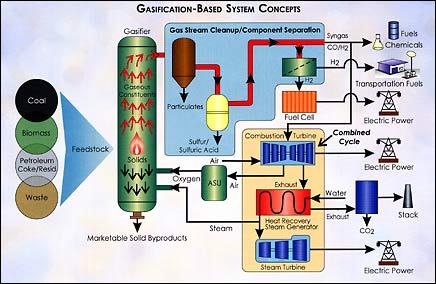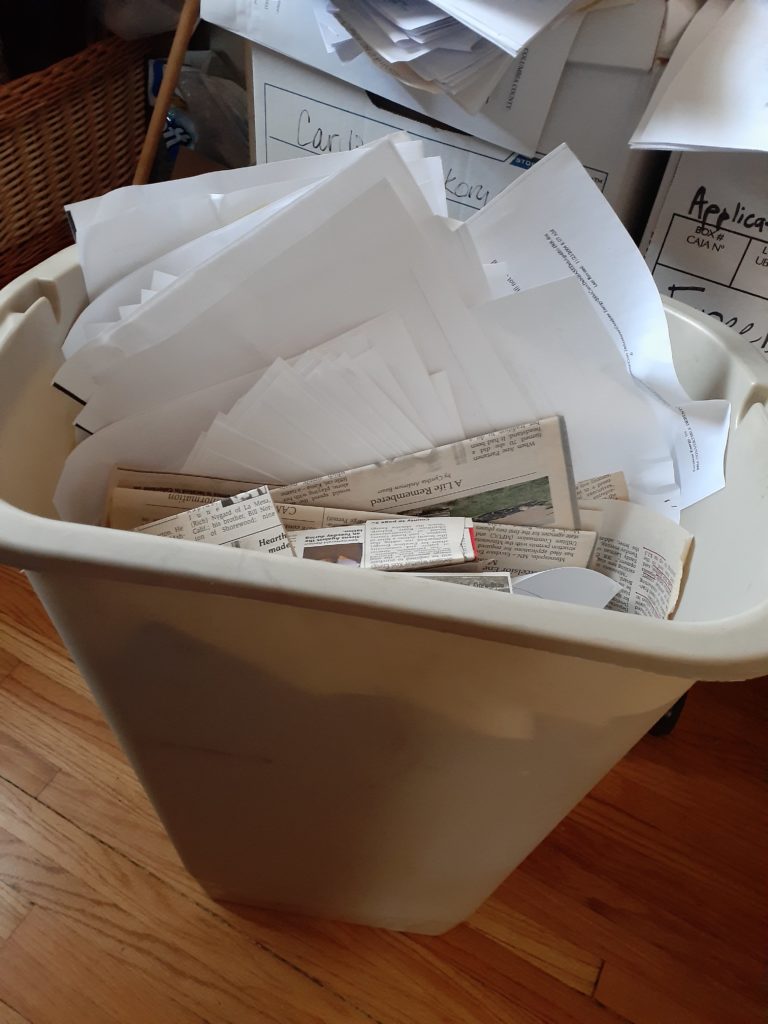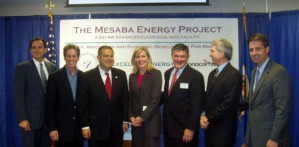It was 20 years ago today…
October 22nd, 2022
EXCELSIOR ENERGY’S MESABA PROJECT
PARTIAL DOCUMENT REPOSITORY
Well, a bit more than 20 years ago… January 15, 2002, just after the start of the legislative session, I was at an energy committee meeting, Senate? House? I think Senate was first, then heard again at House, and the following year they got their legislation through as a part of the 2003 Prairie Island bill.
- The Excelsior Energy link I’m using is compliments of waybackmachine. Note that now, if you plug in “excelsiorenergy.com” it becomes “excelsiorcapital.com (Excelsior Energy Capital).” essentially at a marina at 21960 Minnetonka Blvd.! Related?
Anyway, there was a presentation back in 2002 about the greatest thing since sliced bread (NOT!), a coal gasification project proposed for “somewhere” on the Range. Here’s what they presented:
Note the parts about “brownfield” and “existing infrastructure.” LIES, it’s that simple. Here’s what their site looked like, this was at the DOE and locals site visit in 2005:

Starting in 2005, I was representing “mncoalgasplant,” landowners and residents near the proposed project, joined in tandem by Citizens Against the Mesaba Project (CAMP) (site circa 2013 with live links, thanks waybackmachine!). We had such active folks, every hearing was PACKED, and eventually the project faded, never formally declared dead, but piece by piece, it went away.
HOWEVER, Excelsior Energy did manage to get an save passed by the legislature for a natural gas plant:
Week before last, I picked up files from a cohort who shall remain unnamed, and am scanning in boxes of files, to post here, and recycle hard copies for biomass (UGH, but that’s what Red Wing does. Thanks, Xcel Energy!). I’ll be posting them, some interesting stuff if you’re into energy and political and capital intrigue, some purely inside baseball that no one will care about.
MONEY TRACKING – Spreadsheets and invoices to IRRB for reimbursement
Various Contractor Invoices (some redacted)
What a pain in the patoot that was — TWO ENTIRE WASTEBASKET OF SCANNING!
What’s become of Excelsior Energy?
December 16th, 2018

Remember Excelsior Energy‘s boondoggle Mesaba Project? Go to the PUC’s search page and search for “05-1993” and “06-668” for the dockets.
A little birdie flew by today, cocked its shiny eye and said…

So following up… Does anyone find it strange that as of August 3, 2018, the registered office of Excelsior Energy and its agent, CEO, and Principal Executive Office Address of Tom Micheletti, is THE ABOVE STORAGE UNIT at 4630 Quebec Avenue North, New Hope, MN 55428?

Last known address: 708 1st St., #421, Minneapolis, sold 2017 for $749,900(verified in Metsa for Congress report, 3/9/2018 donation)… and then there’s Orono: Tom & Julie’s house is for sale.
Did you know that Excelsior Energy got their regulatory perks extended until 2025?!?! Really, look at this, Minn. Stat. 216B.1694, Subd. 3(b)(1), a 2017 legislative boondoggle!
Yes, Excelsior Energy was doing their lobbying in 2017.
Julie Jorgensen has been hustling with Greenmark, our good friends Mark Andrews and Red Wing’s ex-Mayor Dennis Egan. Three Musketeers? Three Stooges?

Then there’s Excelsior Energy Capital. What’s that?!?! Well, a Delaware corp registered in Minnesota in August of 2017, and inquiring minds found out their HQ is a BOAT SLIP at 21950 Minnetonka Boulevard, #210, Excelsior, MN.

Really. Could google maps be wrong? It’s not international waters, but assuredly … ummmm… well, bizarre! Look at their TEAM (can you say photoshopped?). I can’t find direct connections to our friends at Excelsior Energy, but with an operation like this, it’s got to be there! Searching…
Remember AWA Goodhue’s office? And Secretary of State lets them get away with this?

Failure of “clean coal” in The Guardian
March 2nd, 2018

Yes, we know it doesn’t work. Learned that in stopping the Mesaba Project:
There were IGCC – coal gasification – plants proposed all over the country, and they fell, one by one. Some not fast enough, the Kemper project, in today’s Guardian, is an example of protracted misrepresentations to keep that money coming in to fund the scam:
The best thing that came from the failed Mesaba Project was the information about the technology that hadn’t been disclosed before. We were able to use this information all over the country to stop these plants, and stop this one before Minnesotans were utterly and hopelessly screwed as they were in Mississippi with Southern’s Kemper and Indiana with Duke’s Edwardsport. Read the rest of this entry »
Responses to Excelsior Energy articles in DNT
August 24th, 2011
For background on this Excelsior Energy scam known as the Mesaba Energy Project, just search on that link and here on Legalectric for Excelsior, Mesaba, gasification, boondoggle, etc.!!!!
If you search their site, what is most noticeable is the changes, lots is missing, for example, on their “About Us” page, their “Our Team” is missing a lot of people. Here’s what it used to say:
| Excelsior Energy | |
Excelsior’s executive team has significant utility and power plant experience including all of the following aspects of large energy projects, planning, development, engineering, financing, permitting, construction and operation.
Executive Team Julie Jorgensen Co-President and CEO Thomas Micheletti Co-President and CEO Thomas Osteraas Senior Vice President and General Counsel Dick Stone Senior Vice President, Development and Engineering Robert Evans Vice President, Environmental Affairs Kathi Micheletti Vice President, Government Relations William Ruzynski Vice President, Development Mary Day Controller
Additional Senior Personnel
The following senior industry experts work with Excelsior Energy on a regular basis
Stephen Sherner Sherner Power Consulting Bruce Browers Browers Consulting
It’s just a remnant of its former self.
Anyway, the Duluth News Tribune articles were published:
Millions in public money spent, but Iron Range power plant still just a dream
Iron Range energy project seeks lifeline in more funding, new fuel source
… and then came some responses, first from the paper’s editors standing up against this boondoggle (finally!), and then from Julie and Tom:
Published August 23, 2011, 12:02 AM
Our view: Taxpayers have right to answers on Excelsior
What happened to our more than $40 million?Even then, what was reported often was incomplete.
And, perhaps most pressing of all to taxpayers, what happened to our more than $40 million?
Here’s what Julie Jorgensen and Tom Micheletti had to say in response:
Published August 24, 2011, 12:00 AM
In response: Excelsior Energy project is an important energy option for state
By: Julie Jorgensen and Tom Micheletti, Duluth News TribuneThe Mesaba Energy Project, under development by Excelsior Energy, is a unique public/
We at Excelsior Energy take our obligations under our
The project is nearing the end of this complex governmental-
Julie Jorgensen and Tom Micheletti are co-CEOs of Excelsior Energy Inc.
Duluth News Tribune on Excelsior Energy scams
August 24th, 2011
For years and years, I represented mncoalgasplant.com opposing this wretched boondoggle of a pipe-dream of “clean” and “green.”
The project lingers on, on life-support, and pulling the plug is long overdue.
The good news is that the Duluth News Tribune is finally paying attention, and looking into the financial irregularities. Duluth News articles are here, and next will be some responses.
It started with an article in Duluth News Tribune, first in a series, the second below:
Published August 21, 2011, 09:40 AM
Millions in public money spent, but Iron Range power plant still just a dream
By: Peter Passi, Duluth News Tribune
Yet Micheletti said he’s stopped making predictions as to when Excelsior will build its first plant.
How much more pay Micheletti and Jorgensen have received since 2006 has not been publicly disclosed.
Part II of the Duluth News Tribune series on Excelsior Energy:
Published August 22, 2011, 12:30 AM
Iron Range energy project seeks lifeline in more funding, new fuel source
By: Peter Passi, Duluth News Tribune
* EARLIER: Millions in public money spent, but Iron Range power plant still just a dream
Gone are state funds, including:
# $10 million from the Minnesota Renewable Development Fund.
“We’ve got staying power to see our way through this,” he said.
Sen. Tom Bakk, D-Cook, supported Excelsior’s request.
“There’s much less risk from an investor standpoint,” he said.
But Anzelc said Excelsior still lacks one essential: a customer.
“To my knowledge, no on in the power business is supportive of this project,” he said.
Even the revamped natural gas plant plan could be a tough sell, however.
Minnesota Power’s Mullen described what he considers “a flat market” for power generation,
But he’s not counting Excelsior out.
“You have to give them credit for their tenacity,” Mullen said.









